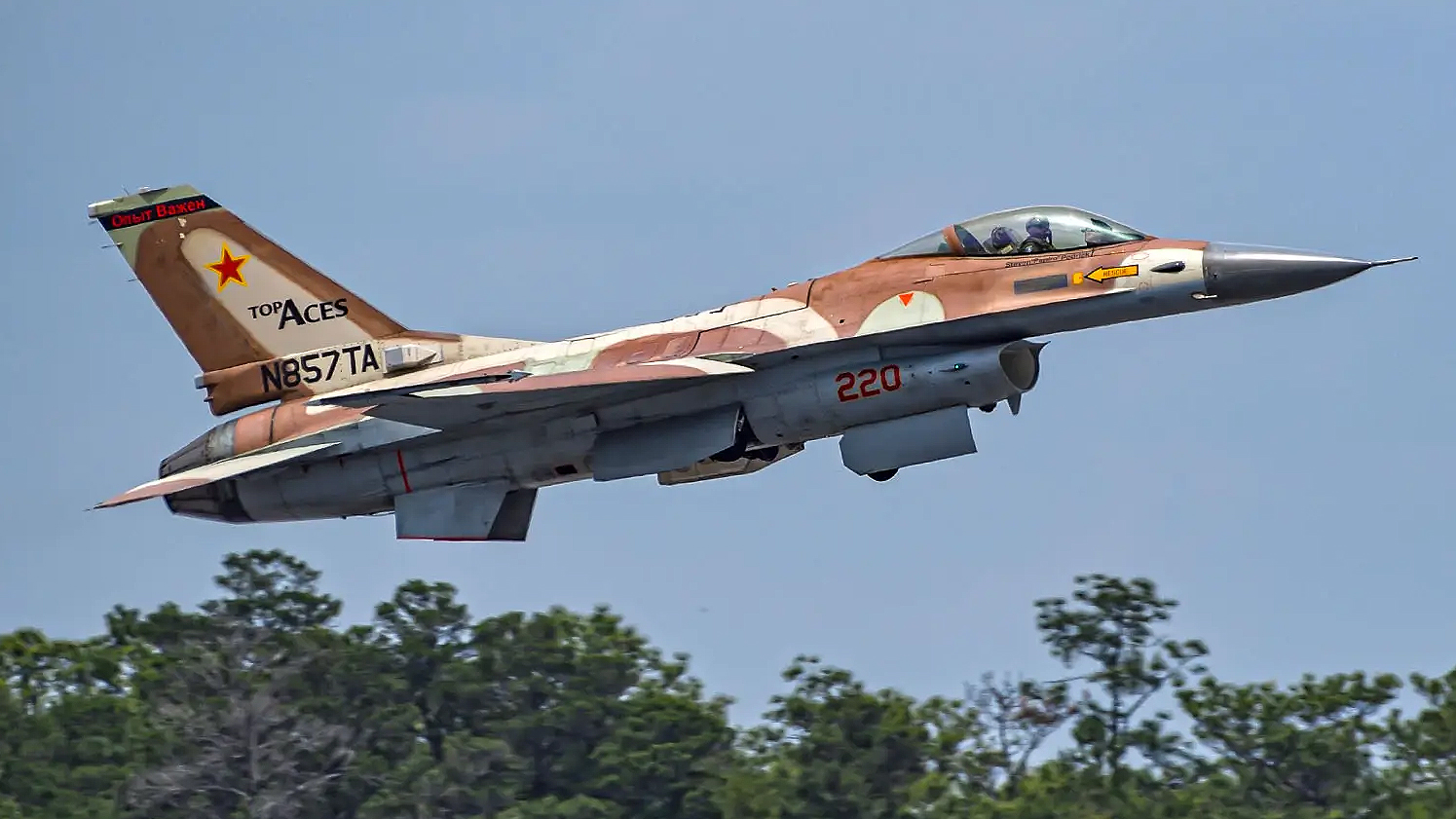“I flew a dissimilar basic fighter maneuvers [BFM] mission a few weeks ago against an experienced F-22 Raptor pilot. After the mission, he told me it was the highlight of his year! We will take that feedback any day,” says Todd “T-Bone” Robbins, Top Aces’ site lead for the adversary air (AdAir) contractor’s operation at Eglin Air Force Base, Florida.
“For pilots of fifth-generation fighter jets, the combination of Top Aces’ highly maneuverable F-16As and their new active electronically scanned array [AESA] radar is exactly what the USAF needs,” Robbins told The War Zone.
In September 2022, Top Aces announced that it had been selected under the U.S. Air Force Combat Air Force Contracted Air Support (CAFCAS) program to provide additional capacity in adversary air for pilots going through Formal Training Units (FTUs) at both Eglin in Florida and at Luke Air Force Base in Arizona. Top Aces has since commenced missions in support of USAF F-35A Lightning II and F-22 Raptor fleets under a contract valued at up to $175 million over a five-year period.
The additional capacity from Top Aces builds on existing AdAir support at both Eglin and Luke from the competing Airborne Tactical Advantage Company, better known as ATAC, which flies Mirage F1s to support the FTU activities at these locations.
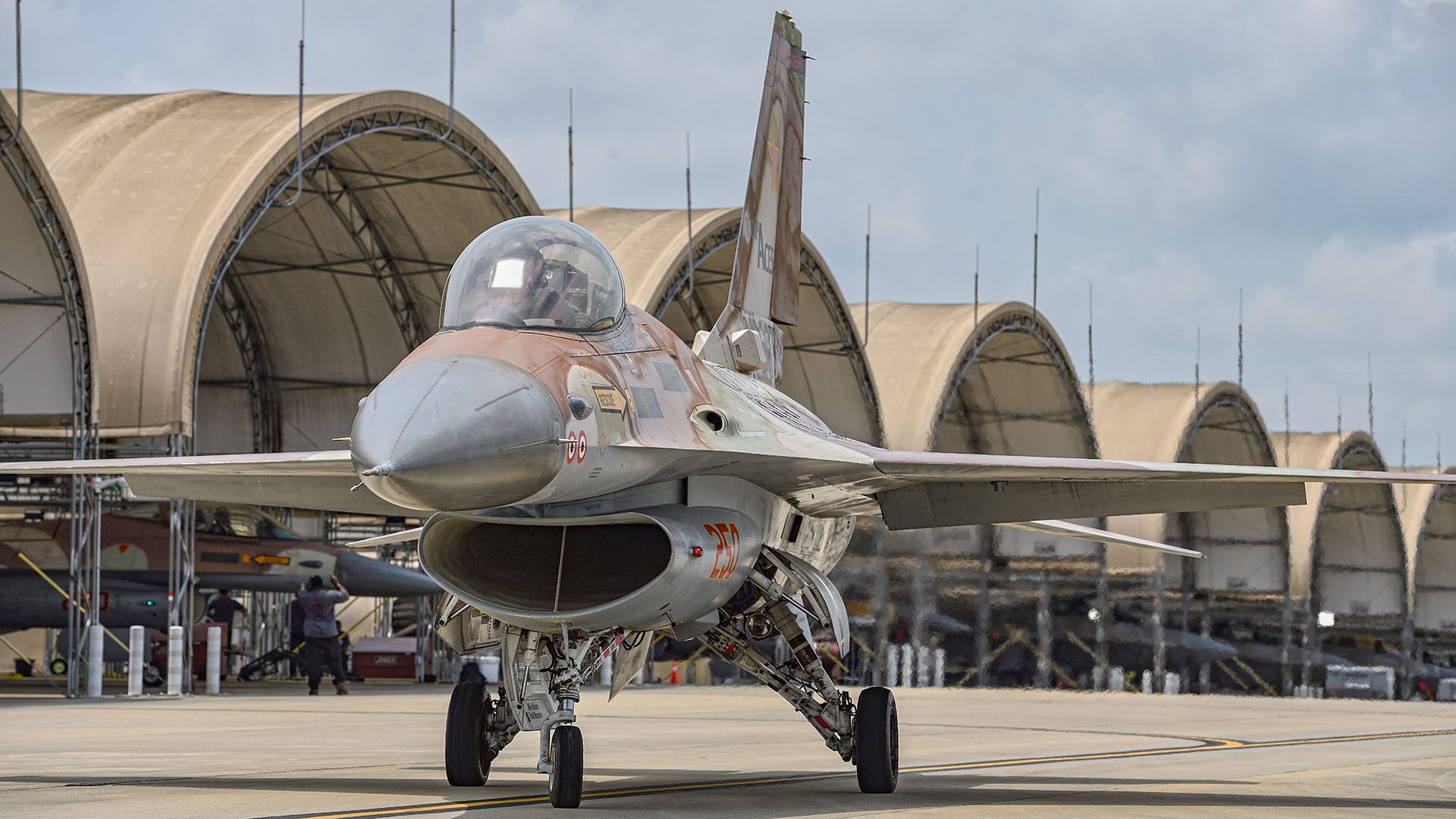
Top Aces is the first AdAir contractor globally to offer the F-16, and it has developed a variant that it calls the Advanced Aggressor Fighter (AAF) — an upgraded version that features Top Aces’ proprietary Advanced Aggressor Mission System (AAMS) open system architecture capabilities — which adds an AESA radar, helmet-mounted cueing system, tactical datalinks, and high off-boresight missile capabilities. You can read more about these capabilities here.
When the five-year contract was awarded, Top Aces initially operated four of its ex-Israeli Air Force F-16s from Tyndall Air Force Base, Florida, pending the completion of an environmental assessment at Eglin. The four desert-painted aggressor F-16As relocated to Eglin in early May 2023. Top Aces has also stationed four F-16As at Luke, where it supports F-35 pilot training with the resident 56th Fighter Wing. Across the two locations, they fly four-turn-four operations, which means two jets at Luke and two at Eglin every morning and then again in the afternoon.
“Of our four F-16As here at Eglin, one is currently an upgraded Advanced Aggressor with the AESA,” Robbins explains. “The four jets enable us to operate a two-turn-two plan here to support the 43rd Fighter Squadron F-22 FTU [which will be relocated to Joint Base Langley-Eustis soon] and the two Eglin F-35A FTUs — the 58th and 60th FS’.”

The Advanced Aggressor technology is hosted within the aircraft independently from the existing fire control computer. Critically, it means the system is not linked to the complex Operational Flight Program (OFP) that runs the main mission functions of the jet. “Our open mission system allows us to change it without the need for complex government approvals, and we aren’t bound to the OEM [original equipment manufacturer] of the aircraft to make any changes to our aggressor system. It means we are more flexible when we want to adjust or improve the system,” explains Robbins. The Advanced Aggressor F-16 features a dedicated multi-function display (MFD) in the cockpit, which connects with the AESA radar and the new helmet-mounted display.

“What we have seen here at Eglin is a need to produce more F-35 and F-22 pilots, so there’s no shortage of need for adversaries, particularly when they get into the heavy air-to-air phases of their syllabus. At that stage, the ability to bring us in as a radar-guided shooter on the adversary side that can punish Blue Air is very useful. They can’t operate against us with impunity as they might against say a T-38, for example. Our Top Aces F-16s, especially when combined with our Baron Ground Controlled Intercept [GCI], means that if they’re not executing properly we can punish their mistakes.” Top Aces says that its ‘Baron’ adversary GCI controllers use existing Air Force systems to help orchestrate the air battle, and they are offered at no additional cost while adding an additional layer of safety.
“We are here to give the customer the best training they can get for whatever mission set they might have,” Robbins continues. “The neat thing about flying an F-16A is that it can do pretty much everything that you need an adversary to do, from long-range tactical intercepts without much maneuvering to close-in dogfighting. In terms of maneuverability — speaking as a career F-16 pilot — these are the most maneuverable F-16s I’ve ever flown. The A-model Viper with the gun removed and flown in a clean configuration can compete with any fighter on the planet in terms of maneuverability.”
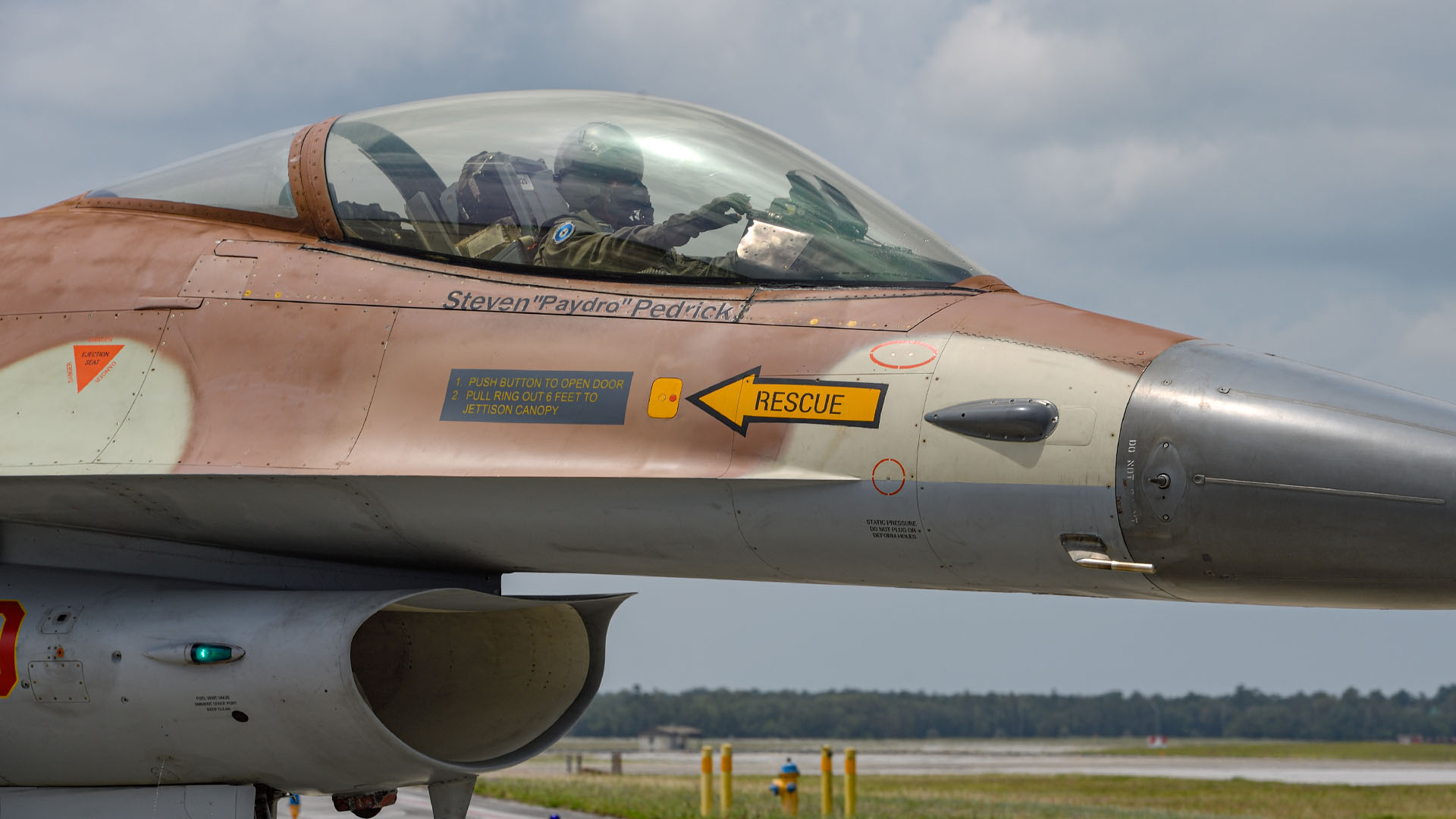
”Our F-16s give us the ability to show the students what the most maneuverable fighter I’ve ever flown can do. This challenges some of their game plans and helps them to really learn what can happen when they get into a within-visual-range [WVR] fight against an agile fighter. Some of their long-range advantages go away once they get into visual range, and they have to max perform their jet in order to survive.”
Robbins explains how an aging, low-tech T-38 Talon jet trainer doesn’t really challenge the likes of an F-35 or F-22 pilot, and that spending top dollar to fly a fifth-gen fighter as Red Air within a squadron is widely acknowledged as not being cost-effective. “That’s the promise of CAFCAS,” says Robbins. “The key to making it successful is having enough capability in the contract adversary air to where they are getting valid training lessons and not getting the negative learning from merging with a T-38 with a turn radius of a mile, versus an A-model Viper that can have a 2,000-foot turn radius inside of what even the best fifth-gen jet can achieve!”
“Our ability to air-refuel has additionally been very useful in student training in that it gives us flexibility. We’ve had instances where we took off, supported an F-22 training mission, went to the tanker, then supported an F-35 training mission — all without having to land and turn the jet. That just wouldn’t have been possible without tanking. We can also fly long distances to support the customer. We recently had an instance when we flew over 250 miles to the airspace, refueled, fought, and then flew the return leg.”
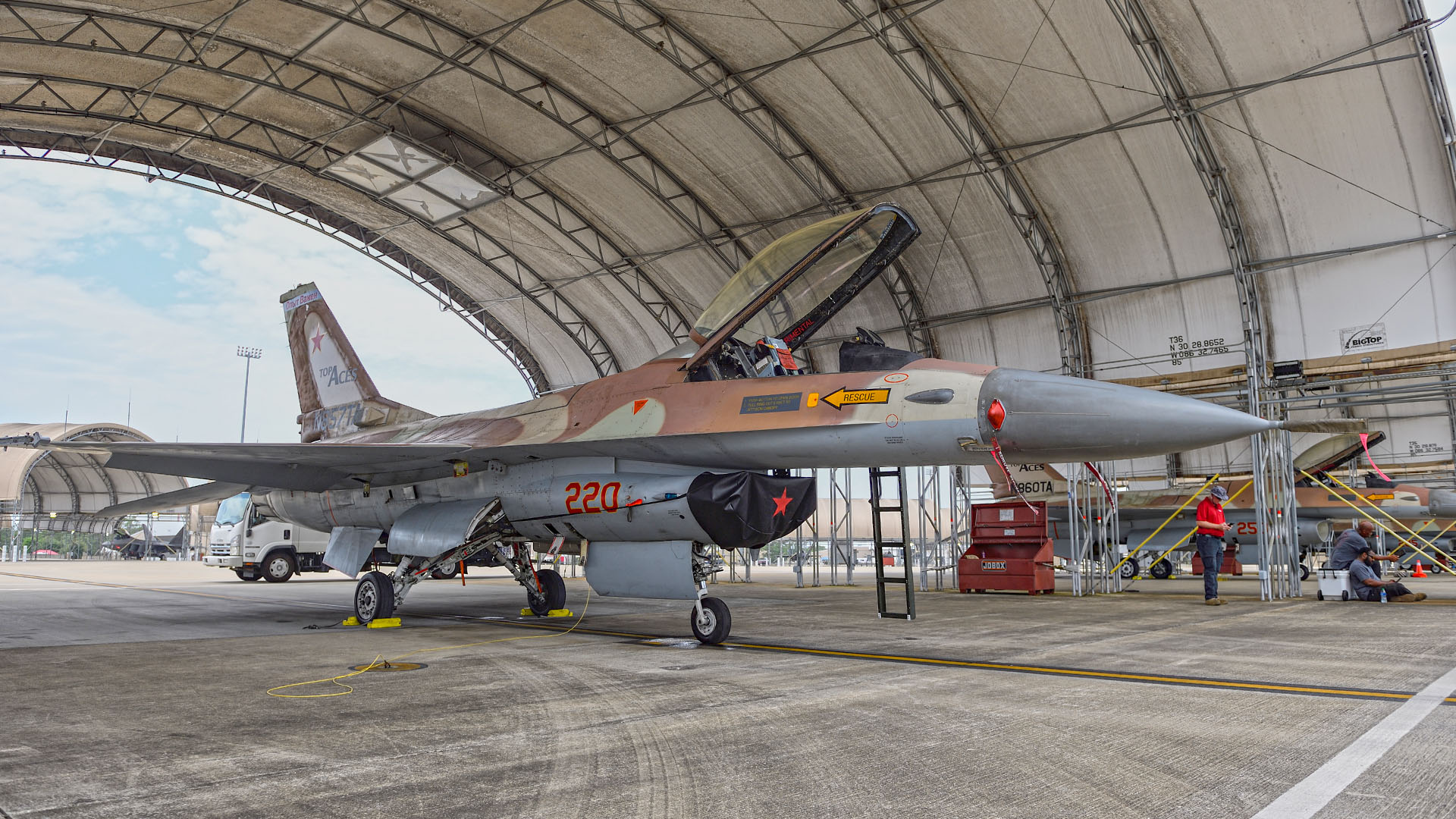
Top Aces isn’t resting on its laurels. Having invested heavily to develop its aggressor F-16 it is already looking at enhancements and new solutions to meet the future needs of contract adversary support. “We are talking to manufacturers about some of the pods that are out there,” explains Aaron “Fang” Steffens, Top Aces Business Development and Technology Growth Manager. “We can carry high off-boresight [HOBS] missiles and are fully certified for AIM-9M Sidewinder, for example, and we are already carrying those in our operations at Luke AFB. There are also other non-U.S. HOBS CATMs [Captive Air Training Missiles] that we could also carry.”
Steffens says Top Aces is working with an unnamed manufacturer to add a podded infrared search-and-track (IRST) system to the F-16, which he says will hopefully be ready for operations by the fall. USAF aggressor F-16s have made use of Lockheed Martin Sniper targeting pods as a means to introduce an IRST to the in-house Red Air community. Meanwhile, competitor Tactical Air has introduced a built-in staring IRST capability to its F-5AT adversary jets, which you can learn more about here.
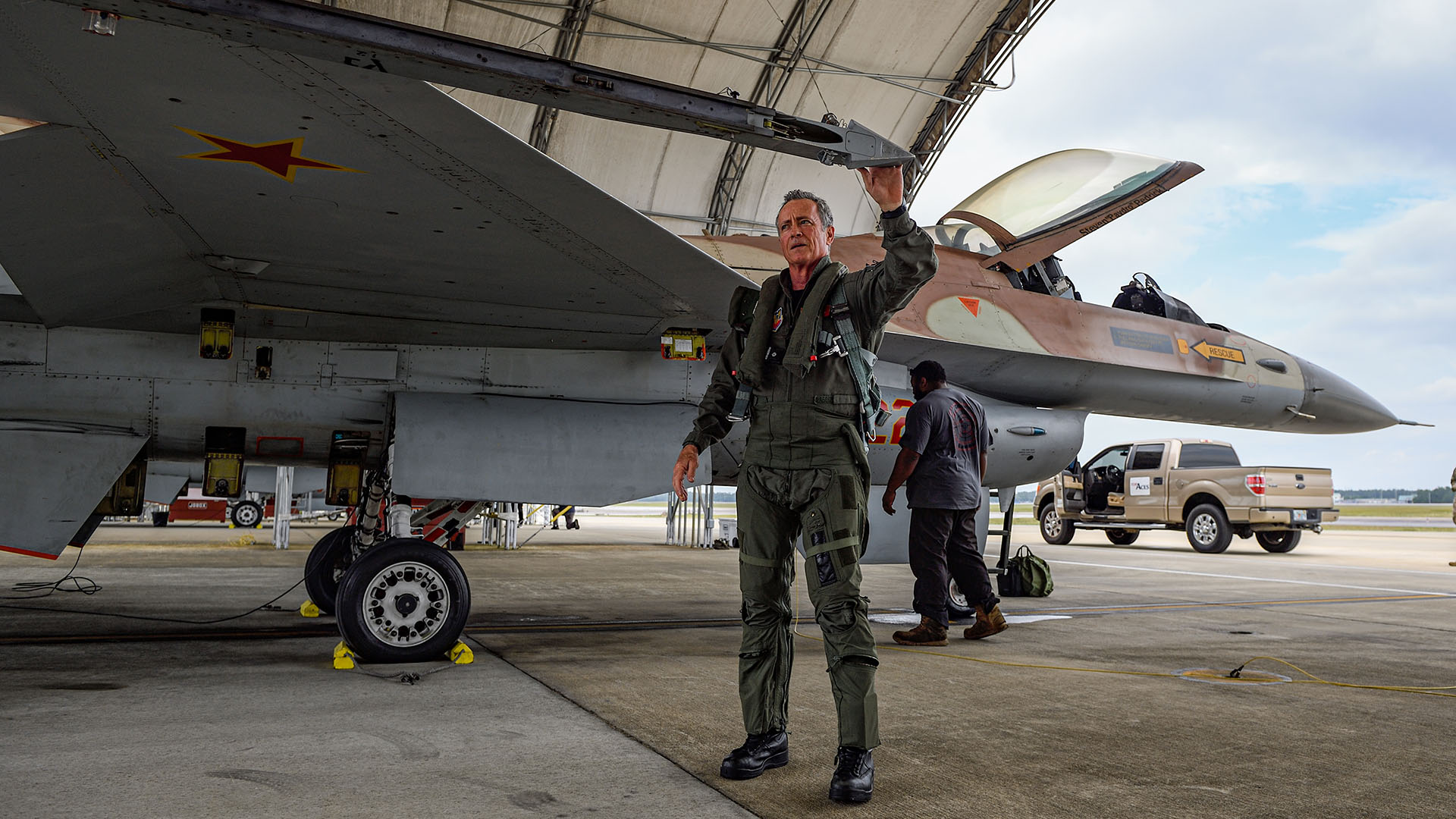
The company is also building a roadmap to develop an in-house Collaborative Combat Aircraft (CCA) offering. “From an AdAir industry perspective, CCAs bring a definite advantage in terms of mass that we can bring to the fight,” explains Steffens. “It also helps with the realism of threat replication, because our adversaries will also operate CCAs at some point. So we are working with potential suppliers to develop this capability, while additionally helping to burn down the risks associated with operating CCAs on the Blue Air side by supporting some of that experimentation with the technology. We think AdAir and CAFCAS could provide a means to outsource some of that CCA experimentation from the U.S. Air Force itself. The goal of fielding 1,000 CCAs is going to be a challenge in the timeline that has been set, and our F-16 mission system lends itself to be able to assist with that.”
Top Aces has announced an agreement with EpiSci — a leader in the field of Artificial Intelligence [AI] for tactical air — that will work towards improving the Advanced Aggressor Mission System (AAMS) in its F-16s to permit the rapid integration of AI tools, and also integrate AI into the Top Aces CCA roadmap. “We would like to present datalink targets as part of our portfolio initially,” says Steffens. “Use of AI would control the kinematics of that target to then be broadcast out on the link. This would present additional mass for the initial battle picture that’s presented to the Blue Forces and we think this could be a valuable product. This kind of technology could eventually lead to Top Aces controlling CCAs with our F-16s further down the road.”
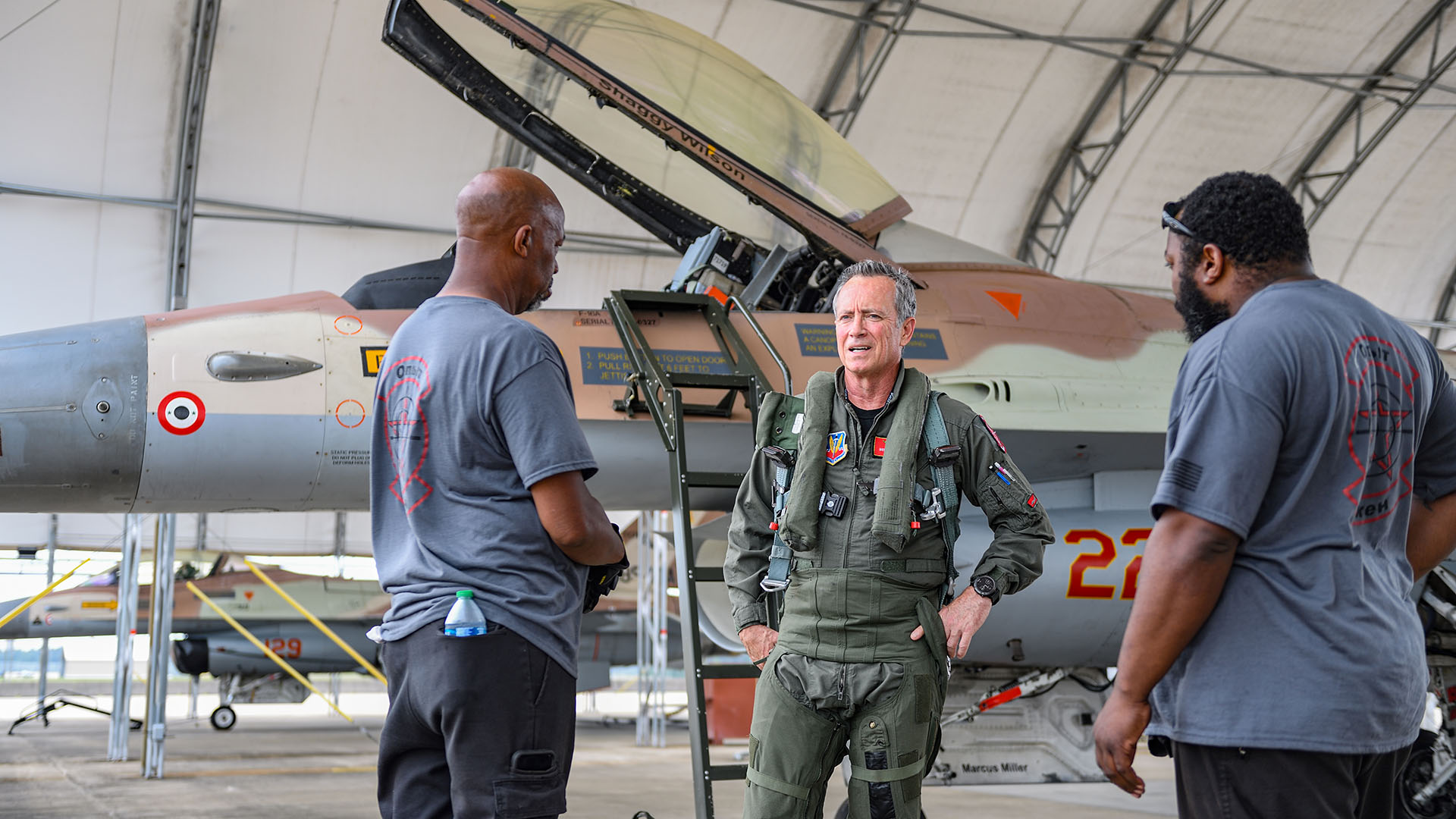
Top Aces believes it not only has the technology, but also the experience that is needed to both maintain and expand its capabilities to future-proof the business. “Over 80 percent of us on the operator side have squadron command experience,” says Steffens. “We have in excess of 1,000 years of F-16 experience in our maintenance corps with a lot of ex-USAF F-16 personnel, and we have a 99 percent mission effectiveness rate, which is very impressive given the age of the aircraft.”
“Top Aces has built a culture of experience that is focused on safety. The average for our pilots is 2,300 F-16 flight hours, and 900 Instructor Pilot hours. Most of us are former aggressors, and a number of us are Weapons School patch wearers as well. We like to think of ourselves as an additional safety buffer, especially when we are working with young Basic Course students. We often have that bit more situational awareness that means we can help fix a situation before things happen,” Steffens adds.
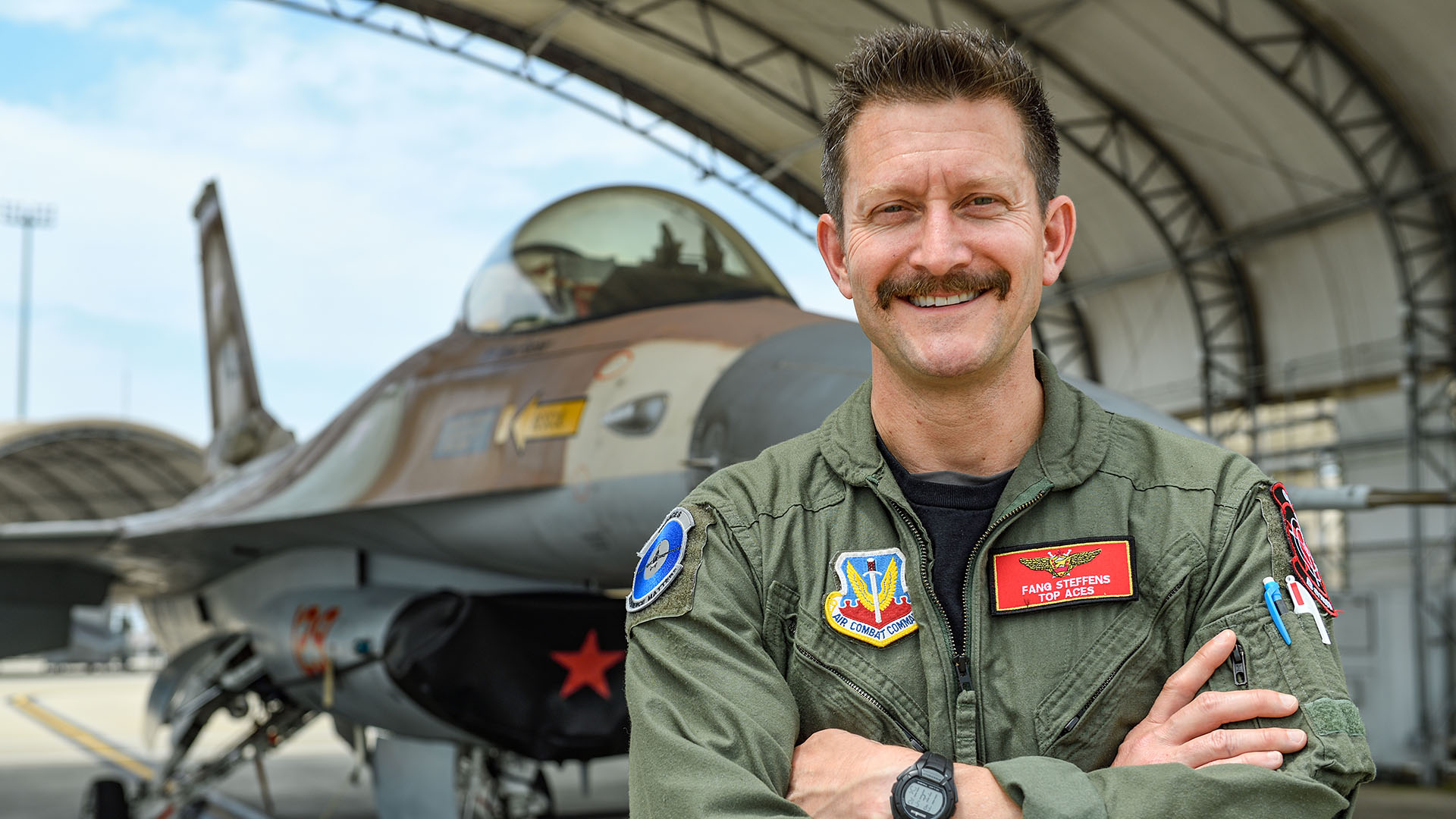
“During my first week with Top Aces in September 2022, I witnessed the company participating in Exercise Black Flag with the USAF’s 53rd Wing Black Flag at Nellis AFB, Nevada,” Robbins says. “As a former pilot in the 64th Aggressor Squadron at Nellis, watching our team perform there seemed a very natural fit. Former aggressor pilots flying desert-painted Top Aces F-16s on the Nellis ranges and using Top Aces’ Baron controllers — everyone knew exactly the capabilities we had and how to integrate them into the in-house aggressor forces.”
“That participation in Black Flag reflects the trust the USAF put in Top Aces to support its premiere operational test large-force exercise [LFE]. Another Black Flag exercise we supported in May 2022 saw one of our Baron controllers being awarded the outstanding performer award for the exercise.”
“Having been employed in industry between my time in the Air Force and coming to Top Aces, the ability of this company to deliver on its roadmap and technologies blows away anything else I’ve seen in this industry. When you couple the professionalism of our adversary focus with the technology we have and are continuing to develop, you are elevating contract AdAir to a new level I’ve not seen anywhere else.”
Contact the editor: Tyler@thedrive.com
